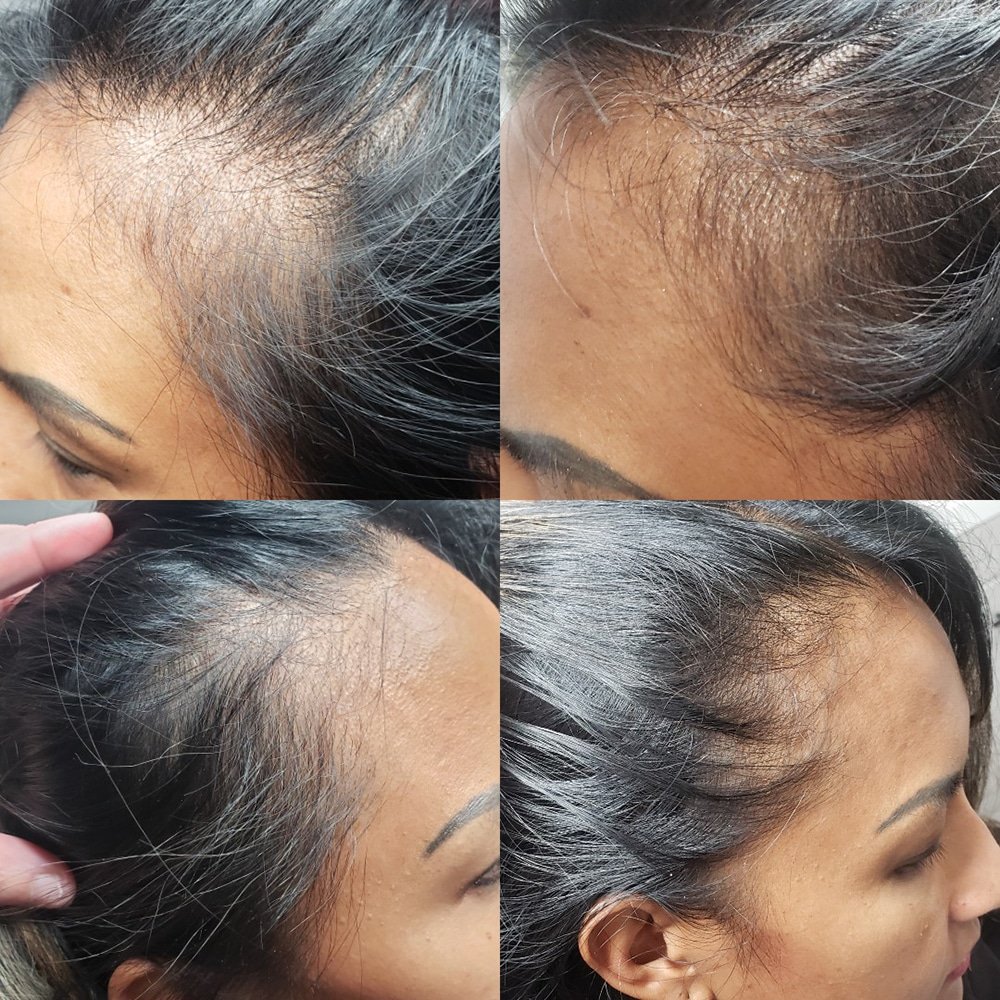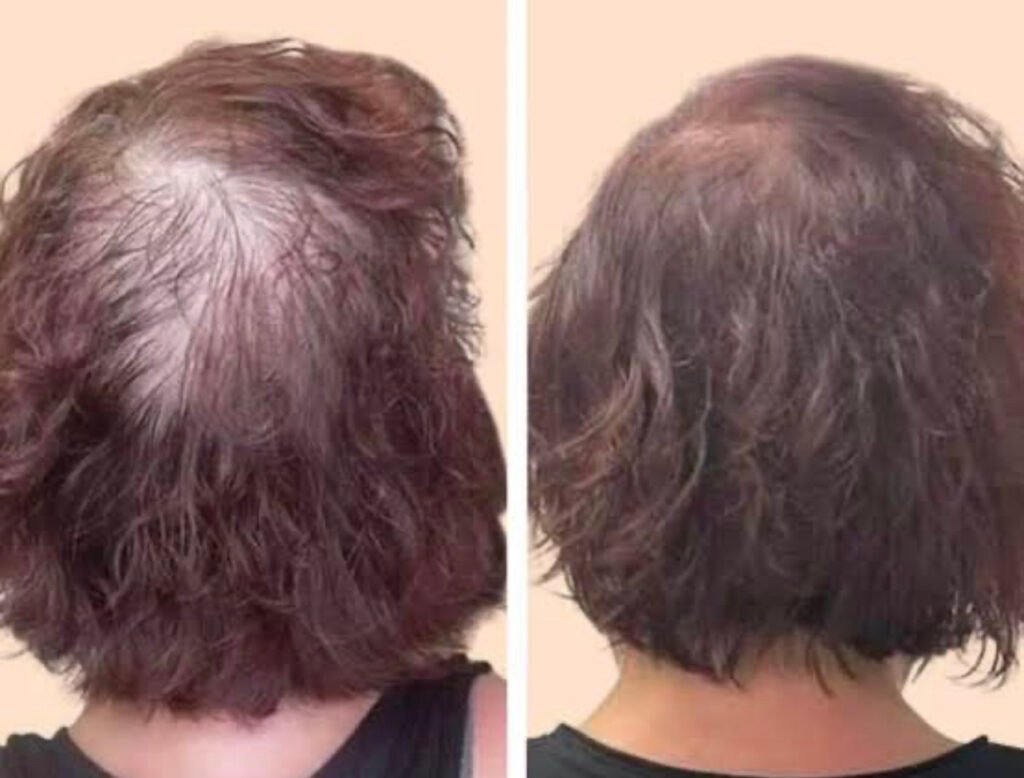Microneedling
Microneedling
Microneedling for Hair Regrowth
Are you looking for a natural, effective way to stimulate hair regrowth? Microneedling might be the solution you’ve been searching for.
Microneedling is a non-invasive treatment that uses a device with fine needlesto create controlled micro-injuries on the scalp. These micro-injuries triggeryour body’s natural healing response, stimulating collagen production andincreasing blood flow to the hair follicles. The result? A healthier scalpenvironment that supports stronger, thicker, and more resilient hair growth.
How Microneedling Works for Hair Regrowth
- Stimulates Hair Follicles By creating micro-channels on the scalp, microneedling activates dormant or weakened hair follicles, encouraging them to produce new hair strands.
- Improves Scalp Health A healthy scalp is the foundation for healthy hair. Microneedling enhances blood circulation, delivering essential nutrients and oxygen to your hair follicles.
- Boosts Collagen and Growth Factors The process stimulates collagen and can improve the absorption of topical treatments, such as serums containing growth factors, peptides, or minoxidil.
- Reduces Hair Thinning Consistent microneedling treatments can slow the progression of hair thinning by revitalizing the follicles and supporting their natural growth cycle.
Why Choose Microneedling?
Combining microneedling with topical minoxidil (e.g., Rogaine) has been shown to improve results more effectively than either treatment alone. Here’s why:
- Non-Surgical: No invasive procedures or downtime required.
- Natural Results: Encourages your body’s own regenerative processes.
- Safe & Effective: Suitable for both men and women experiencing hair thinning or early hair loss.
EXCELLENTTrustindex verifies that the original source of the review is Google. I had a successful experience with the micro pigmentation. We successfully achieved a very natural look that is difficult to clock as anything augmented. If you’re looking for a natural look, I recommend This establishment.Posted onTrustindex verifies that the original source of the review is Google. Katie’s mastery of SMP is evident in every detail. She designed a hairline that looks entirely natural and blends seamlessly with my existing hair, demonstrating her remarkable precision and artistry. After completing my third session, the transformation has exceeded all my expectations. SMP isn’t just about applying pigment—it’s about choosing the right professional who brings both vision and flawless technique. If you’re unsure about who to trust with your hairline, I’ve been there. Don’t hesitate—Katie is the one to call.Posted onTrustindex verifies that the original source of the review is Google. Amazing work. I couldn’t be any happierPosted onTrustindex verifies that the original source of the review is Google. Did 2 sessions with Katie. She definitely knows what she’s doing. She has been super accommodating as I missed my third appointment due to an illness. Her work speaks for itself. Feel like a brand new man.Posted onTrustindex verifies that the original source of the review is Google. Recently visited the clinic for a “touch up” for an SMP procedure I had from nearly 3 years ago. The clinic is aesthetically pleasing, well kept and clean. Katie was professional in her approach, was on time and the procedure completed seemlessly. She ensured I was comfortable and communicated in what she was undertaking for a natural look. I was in and out in about an hour. I shall return for any future requirements. Would recommend this clinic if SMP is a consideration for you.Posted onTrustindex verifies that the original source of the review is Google. The absolute BEST. If you’re debating doing SMP this is really the only spot to go. I’d been debating getting it done for years but was worried by some of the unnatural looking work out there. Smplyink had the most natural looking results I’d seen online. I’m happy I finally pulled the trigger and got it done because my results did not disappoint. It’s really undetectable. Katie was amazing and made sure I got exactly what I was looking for. Her top notch customer service also made the process so much easier. If you're considering getting SMP, this is the place to go.Posted onTrustindex verifies that the original source of the review is Google. I can't recommend Katie at SMPLYINK SMP enough! Her expertise and professionalism are unmatched, and she truly makes you feel comfortable throughout the entire process. From the moment I walked in, I knew I was in good hands. Katie took the time to listen to my concerns, explain the scalp micropigmentation process in detail, and tailor the treatment specifically for me. The results are incredible, so natural-looking, and have completely transformed my confidence. If you're considering SMP, Katie is the best in the business. Thank you, Katie, for your amazing work!Posted onTrustindex verifies that the original source of the review is Google. Felt very comfortable with my consultation. Everything went very well my second appointment and Katie was very professional.Posted onTrustindex verifies that the original source of the review is Google. Katie at SMPLYINK is so talented and such a professional. I am beyond happy with everything. If you are at all interested in SMP you need to visit SMPLYINK. You won’t regret it! After seeing so many botch jobs I was very skeptical but Katie was incredible right from the initial consult and walked me through everything. The results are better than I ever could have imagined. I have gotten so many compliments and the best part is it looks so natural that nobody knows it’s SMP. My hairline has gone from my greatest insecurity to now being a major source of confidence for me. I honestly believe nobody but Katie could have done this for me and I am so grateful.Posted onTrustindex verifies that the original source of the review is Google. Katie is the best! I absolutely love her work and I can confidently say this: she is the best SMP artist in Canada. SMP is not as obvious as it seems so I recommend to do it with only a professional with lots of experience.
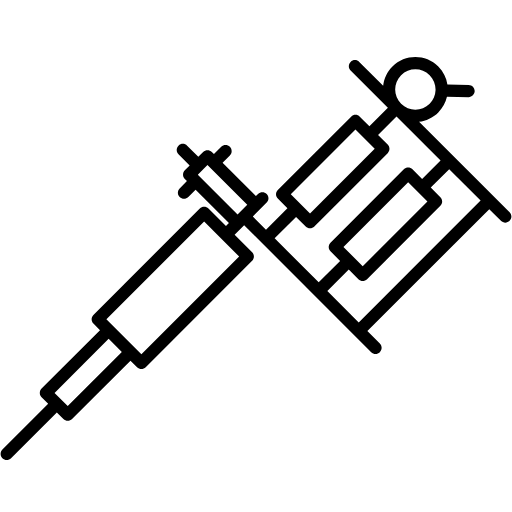
SMP vs Microneedling?
Here’s a comparison to help determine whether Scalp Micropigmentation (SMP) or microneedling might be a better choice for different hair loss goals and situations:
Scalp Micropigmentation (SMP)
Best for: Individuals looking for the appearance of a full head of shaved or short hair
Ideal candidates:
- People with significant hair loss or baldness who want a permanent, low-maintenance solution without needing/wanting actual hair growth.
- Individuals experiencing pattern baldness (as opposed to thinning), where hair restoration might not be as successful.
- Those looking for a quick, long-lasting option (SMP results last years with minimal touch-ups).
Limitations:
- SMP is a cosmetic procedure and does not promote hair regrowth. It provides the appearance of hair by filling in areas with pigment.
- Not suitable for individuals who want to grow their hair longer, as the effect is designed to mimic a shaved head.
Pros and Cons:
- Pros: Long-lasting, customizable, immediate results, minimal downtime.
- Cons: Won’t grow your hair back, requires careful maintenance immediately after each session for optimal healed results.
Microneedling
Best for: Stimulating hair regrowth in thinning areas
Microneedling creates tiny channels in the scalp to boost blood flow, collagen production, and absorption of growth-promoting serums. It’s intended to encourage natural hair growth.
Ideal candidates:
- Individuals experiencing early-stage hair thinning or mild hair loss, who still have some active hair follicles.
- People looking for a gradual and natural improvement in hair density.
- Those open to multiple treatments over time, as microneedling typically requires consistent sessions for noticeable results.
Limitations:
- Results are gradual and vary per person, depending on factors like age, genetics, and the extent of hair loss.
- Requires regular treatments for maintenance, as the effects aren’t permanent.
Pros and Cons:
- Pros: Non-invasive, promotes natural hair regrowth, complements other hair treatments.
- Cons: Requires commitment to ongoing treatments, results vary, and it may not work well for advanced hair loss.
Choosing Between SMP and Microneedling
Some people choose to combine the two treatments, using SMP to enhance density after they undergo microneedling for gradual regrowth. A consultation can help clarify which treatment—or combination—would align best with individual goals and hair loss stages. It is important to note that should you choose SMP as your preferred hair loss solution, you are no longer eligible for Microneedling, as the process can hinder your SMP results. You can, however, opt for SMP after you are finished with microneedling sessions.
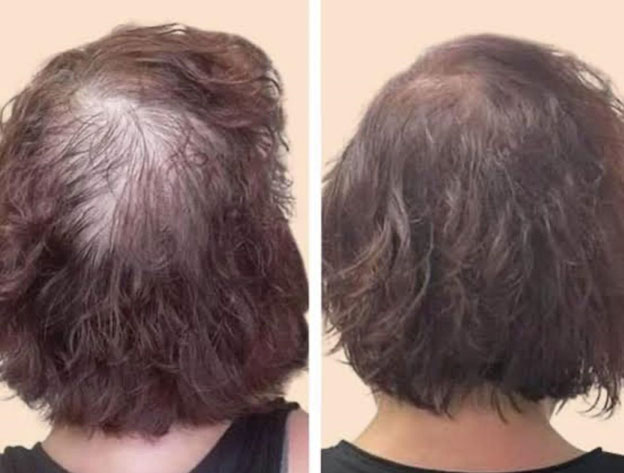
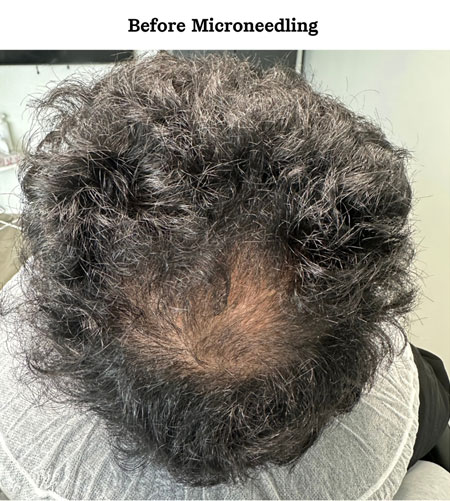
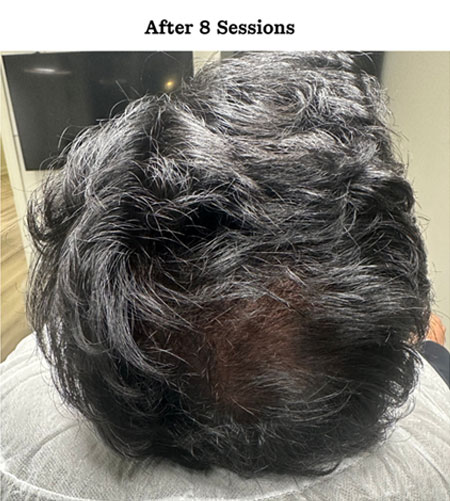
Yes, microneedling has shown promising results for hair regrowth, especially for individuals experiencing early stages of hair loss or thinning. The process works by creating micro-injuries in the scalp, which stimulates the body’s wound-healing response, increasing blood flow, collagen production, and growth factors in the treated areas. This can help strengthen hair follicles and improve the thickness and density of hair.
Effectiveness of Microneedling Alone
Studies have shown that microneedling can promote hair regrowth on its own by creating a healthier environment for hair follicles to thrive. However, results can vary depending on factors like the severity of hair loss, age, genetics, and overall health. People with early signs of thinning tend to see the best results, as they likely have more active hair follicles.
Microneedling Combined with Minoxidil
Combining microneedling with topical minoxidil (e.g., Rogaine) has been shown to improve results more effectively than either treatment alone. Here’s why:
- Enhanced Absorption: The tiny channels created during microneedling allow minoxidil to penetrate deeper into the scalp, improving its efficacy. Since minoxidil is a vasodilator, it encourages more blood flow to the hair follicles, and microneedling amplifies this by opening up pathways for the solution to reach the follicles more directly.
- Increased Growth Factor Release: Microneedling triggers the release of growth factors and collagen, which supports hair health. Combined with minoxidil, which prolongs the anagen (growth) phase of hair follicles, the two treatments work synergistically.
- Clinical Evidence: Studies have shown that individuals who used both microneedling and minoxidil experienced significantly more hair growth than those using minoxidil alone. Research published in the Journal of Cosmetic Dermatology found that hair density and thickness improved more in participants who received both treatments over a 12-week period compared to those who used only minoxidil.
Important Considerations
- Patience and Consistency: Results with microneedling and minoxidil are not instant. It typically takes a few months of consistent treatment to see noticeable improvements.
- Professional vs. At-Home Treatment: While at-home microneedling devices are available, in-office treatments by a professional often use more advanced tools and can yield better, safer results. Your provider can also help with an optimal minoxidil application schedule after microneedling to maximize results.
In summary, microneedling can be effective for hair regrowth, particularly when combined with topical minoxidil. The combination works synergistically to stimulate hair follicles, improve blood flow, and create a more robust environment for hair growth.
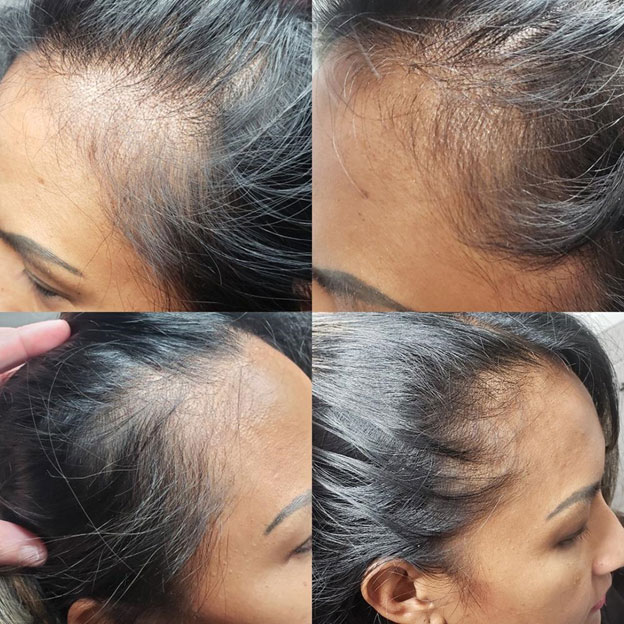
What is Stem Cell Derived Growth Factor Serum?
Stem Cell Derived Growth Factor Serum is used in conjunction with microneedling. It is formulated to enhance skin rejuvenation by delivering potent active ingredients into the skin. The primary components of the serum include:
- Human Bone Marrow Stem Cell-Derived Growth Factors and Cytokines: These bio-signals are harvested from cultured human bone marrow mesenchymal stem cells. They play a crucial role in promoting scarless healing and reducing inflammation, thereby stimulating collagen and elastin production.
- Hyaluronic Acid: A naturally occurring substance in the human body, hyaluronic acid is known for its exceptional hydrating properties. It helps retain moisture, leading to plumper and more supple skin.
The efficacy of this serum is supported by its formulation, which leverages the regenerative capabilities of stem cell-derived growth factors and the hydrating benefits of hyaluronic acid. Clinical studies and practitioner testimonials have reported improvements in skin texture, hair growth, and over all appearance of skin and hair.
It’s important to note that individual results can vary based on factors such as skin/hair type, age, and specific concerns. Consulting with a qualified professional can provide personalized insights into how microneedling with stem cell derived growth factor serum may benefit your skin.
Frequently Asked Questions (FAQs) about Microneedling
Microneedling involves creating tiny punctures in the scalp using a device with fine needles. This process stimulates blood flow, encourages collagen production, and can enhance the absorption of topical treatments, all of which contribute to promoting hair growth.
The amount of sessions required will vary from person to person, which will affect the cost. One single session usually costs between $200-250+tax.
We recommend microneedling treatments every 2-4 weeks, depending on individual needs and skin sensitivity. Your provider will help determine the ideal frequency for optimal results.
Results vary per person, but typically, patients notice improvement within 3-6 months of regular treatments. Initial results may include less hair shedding and the appearance of baby hairs, followed by increased hair density over time.
Some patients experience mild discomfort, but we are able to use a numbing cream to minimize pain. The sensation varies based on individual pain tolerance, but it’s generally described as a mild pricking feeling.
Temporary side effects may include redness, swelling, and mild scalp sensitivity, which typically subside within 1-3 days. It’s advised to avoid sun exposure and strenuous activity for at least 24 hours post-treatment.
Yes, microneedling is often combined with topical treatments like minoxidil to enhance results. However, it’s best to consult with your provider before adding new products to ensure safety and effectiveness.



